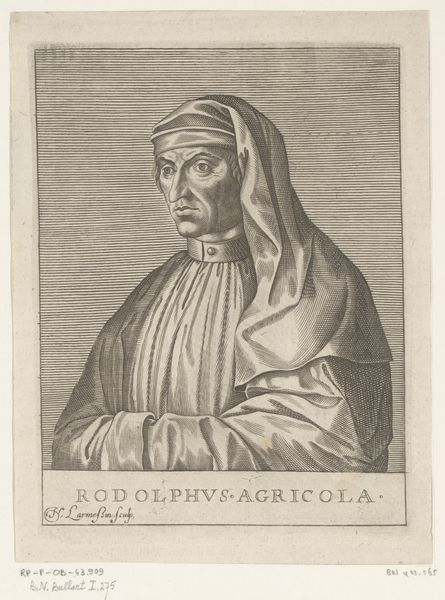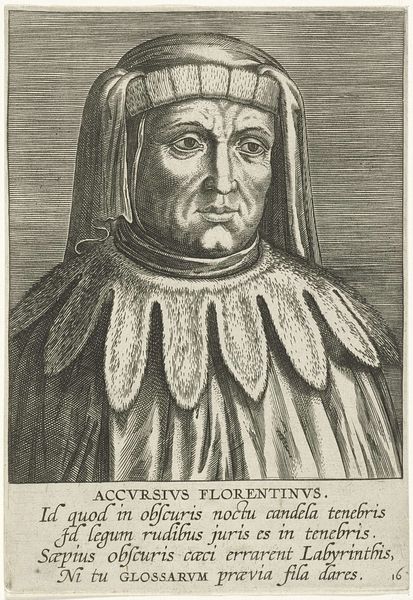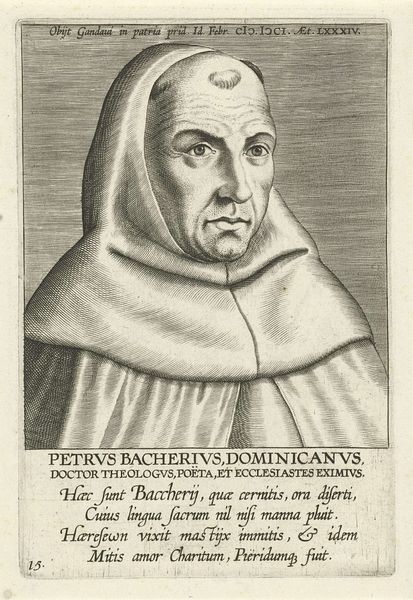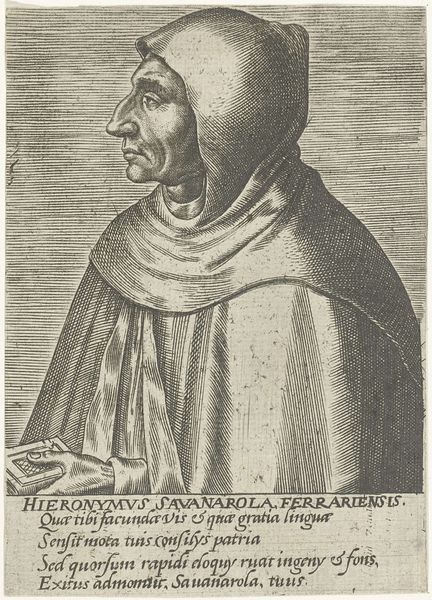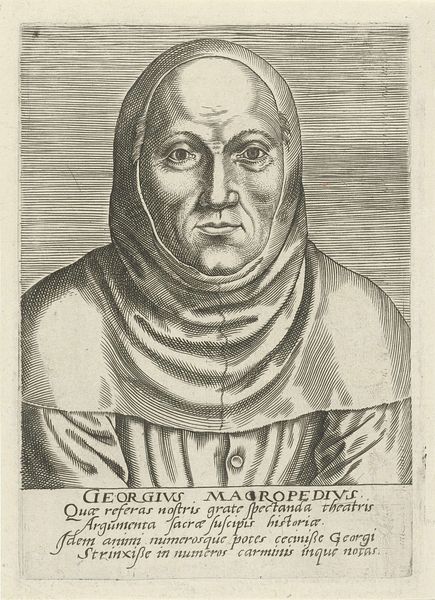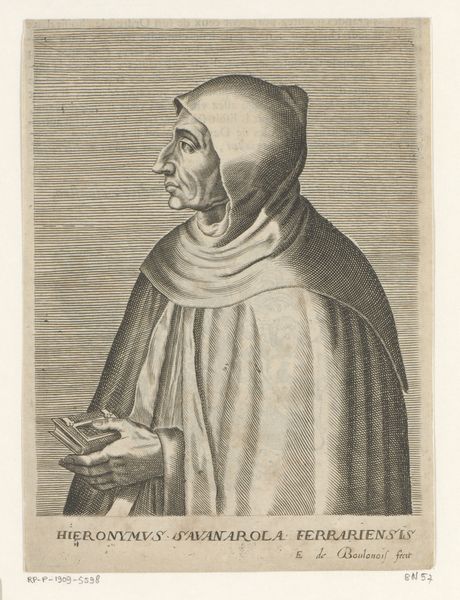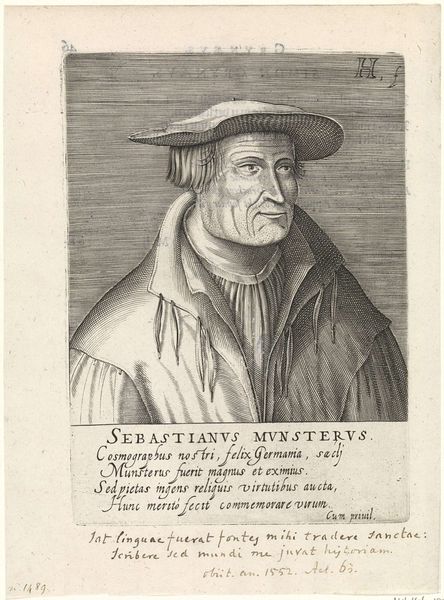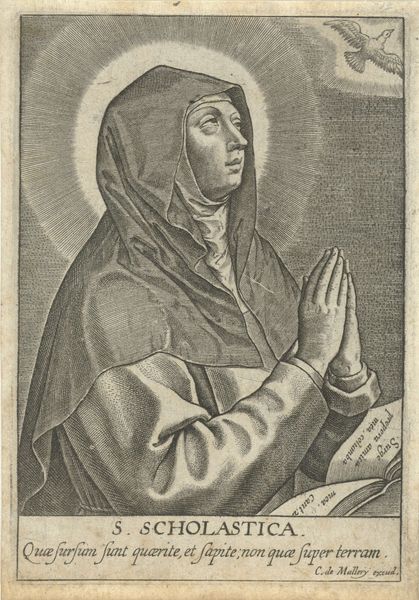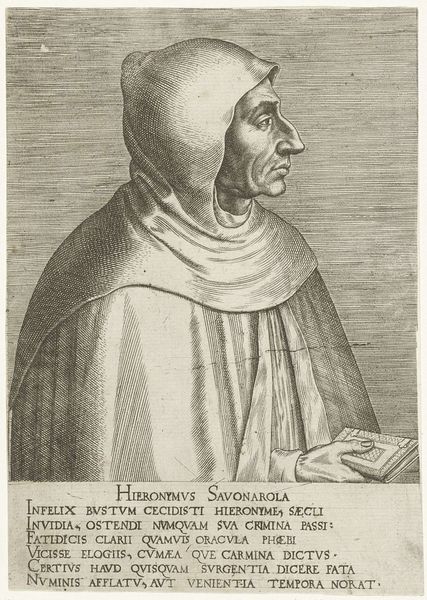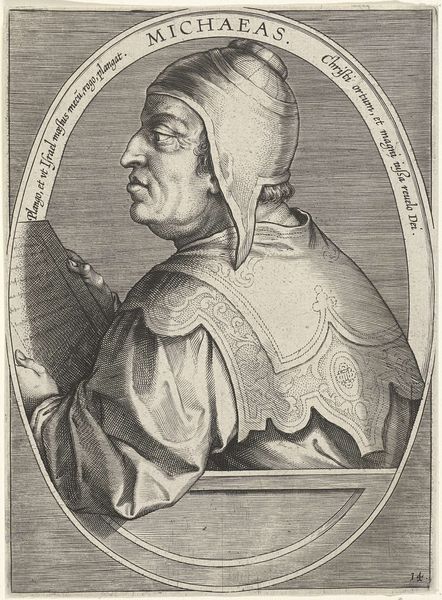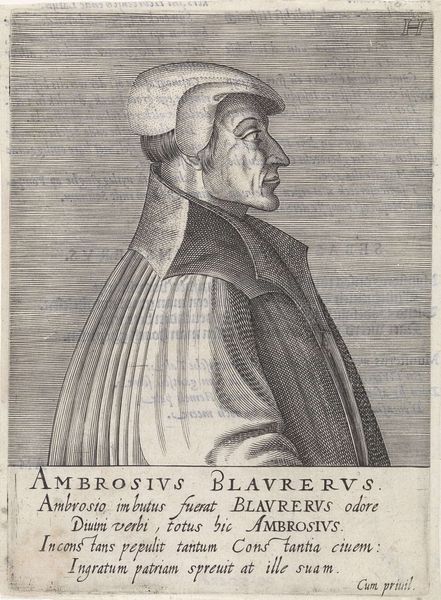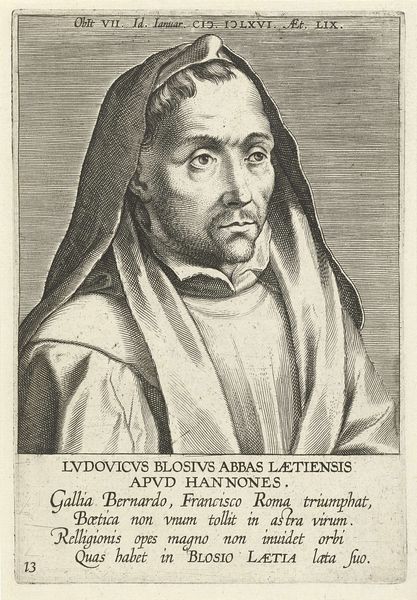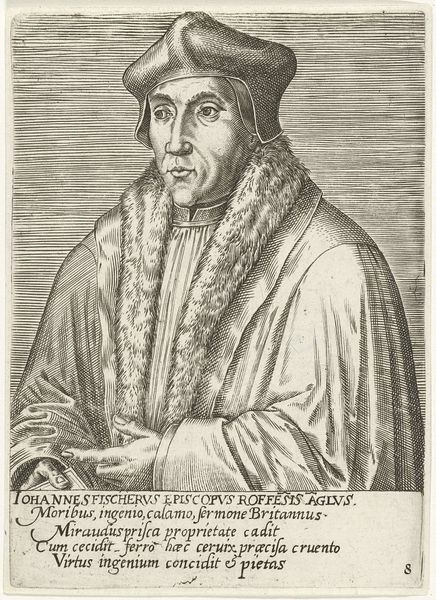
print, engraving
#
portrait
# print
#
old engraving style
#
11_renaissance
#
history-painting
#
northern-renaissance
#
engraving
Dimensions: width 120 mm, height 174 mm
Copyright: Rijks Museum: Open Domain
Curator: Philips Galle's engraving, "Portret van Rudolf Agricola," created in 1572, offers a fascinating glimpse into a Renaissance intellectual. It's currently housed in the Rijksmuseum. What are your initial thoughts? Editor: It strikes me as austere, almost stoic. The lines are incredibly precise, lending a gravity to the subject, a humanist of the Northern Renaissance, by the looks of it. The materiality is what grabs my attention. Curator: The print medium itself, the engraving technique, speaks volumes. Consider the sheer labor involved in producing those fine, controlled lines—a network of incisions into the copperplate, mirroring Agricola’s meticulous intellectual pursuits. We observe consistent hatching that denotes volume, depth, form. Editor: Exactly! And think about the engraver, Galle, and the economy that surrounds him; he would be working as a highly skilled craftsperson dependent on the patronage system of that time to make ends meet through reproducing portraiture, for example. The act of producing multiples changes art making at this time too; an ability to reach greater audiences to impart wisdom through printed word. Curator: Note how the formal elements support this air of Renaissance intellectualism. Agricola is framed frontally with little affect, his gaze turned slightly as if contemplating weighty matters, reflecting ideals of humanist thought. Galle’s craftsmanship, like Agricola's dedication to scholarly perfection, underscores this dedication to detail. The lettering that follows seems significant, the semiotics seem quite sophisticated here! Editor: Let's consider the role of printmaking at the time. The reproduction of Agricola's image democratized it, shifting cultural value beyond just aristocratic art buyers, which has resonance. The use of standardized printing processes is the genesis of modern methods of fabrication that changed what art is able to do. Curator: In essence, it's a piece steeped in controlled and focused intensity. Both Galle, the craftsman, and Agricola, the subject, are enshrined through this artifice and formalist approach. It leaves us appreciating Renaissance ideals! Editor: Right. From my angle, Galle’s skilled engraving captures not only a man but also the evolving material culture of knowledge and dissemination within Renaissance society through production. Both angles emphasize his importance and cultural standing during this transformational era.
Comments
No comments
Be the first to comment and join the conversation on the ultimate creative platform.
